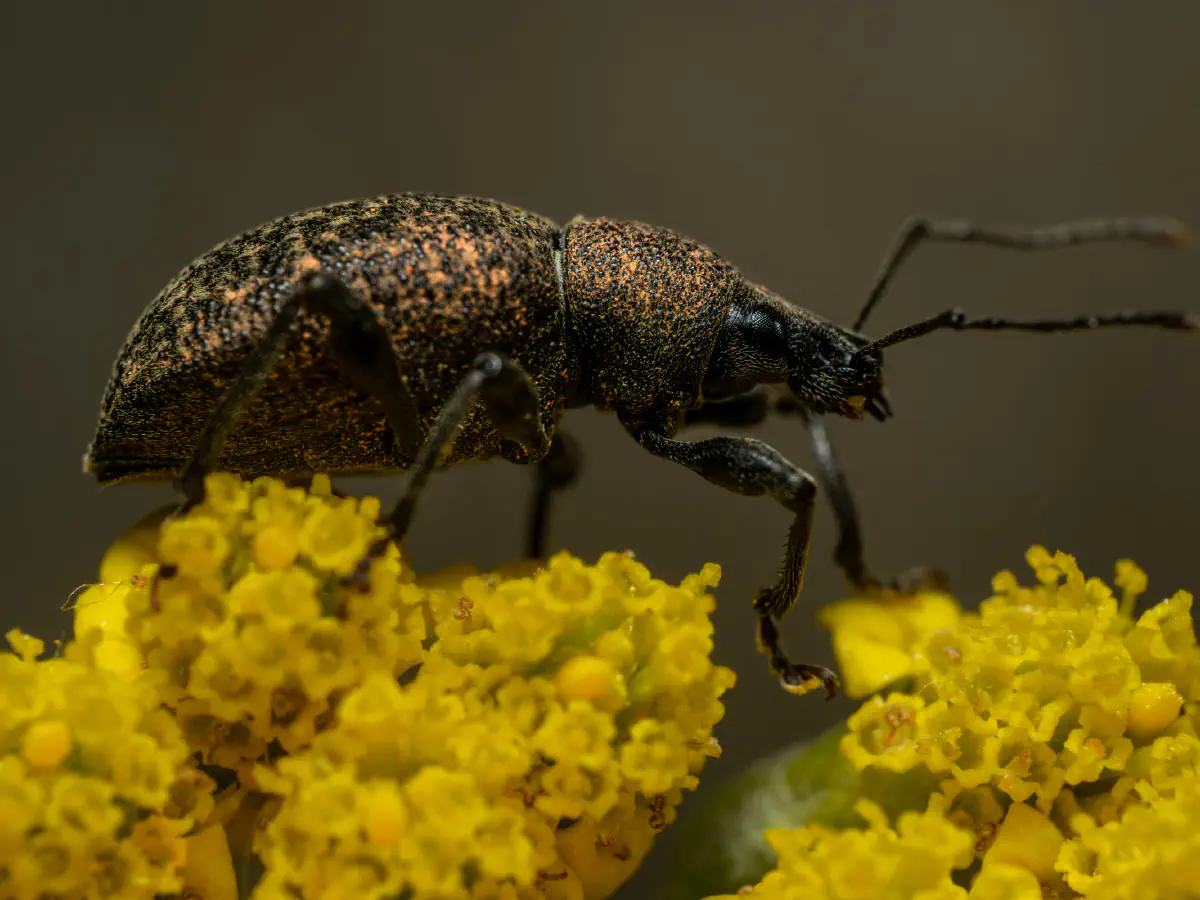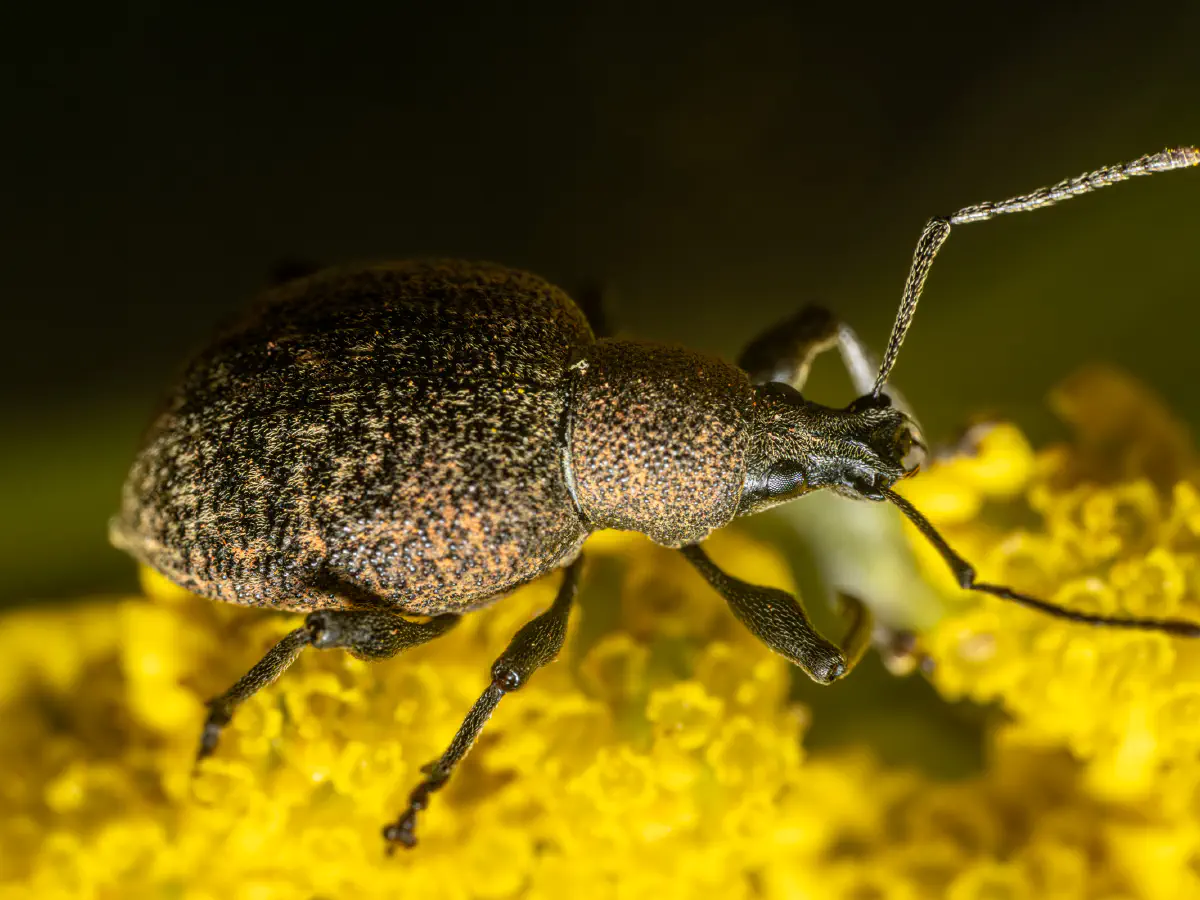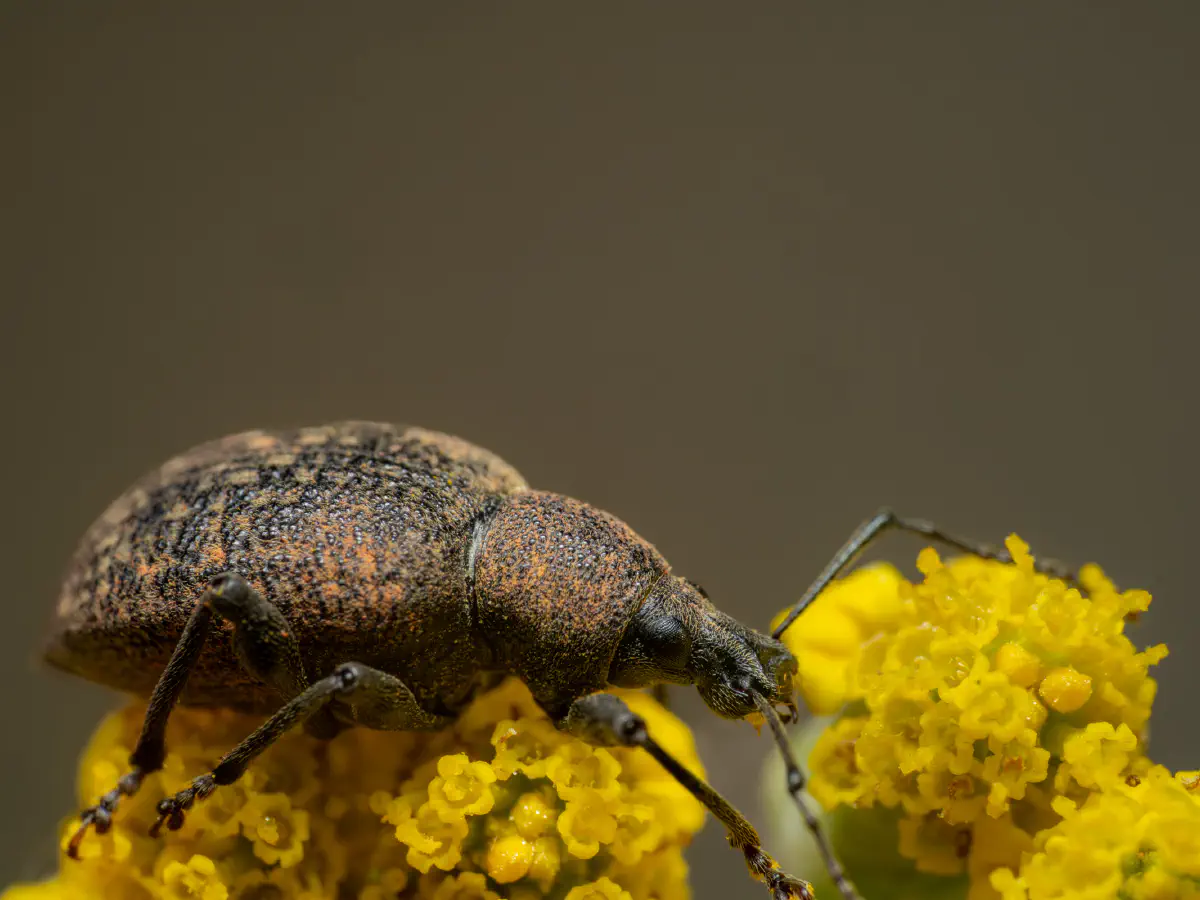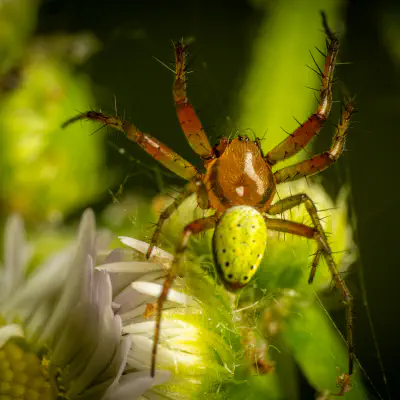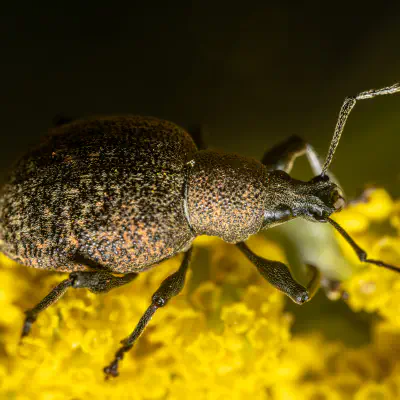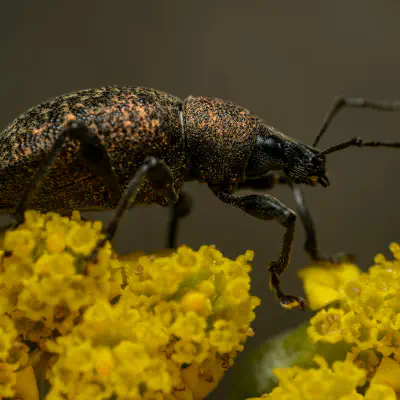The adult weevil is matte black with fused wing covers, and is unable to fly. It feeds at night on the outer edges of leaves, causing the leaves to have a notched margin. Broadleaved evergreen plants such as Camellia, Rhododendron, Euonymus and Bergenia are particularly prone to damage, although a wide range of different garden plants are susceptible to attack. Female weevils have the ability to reproduce parthenogenetically with fertilisation of eggs required to produce males,
though no males have been observed. This form of parthenogenesis is known as thelytoky. Grubs grow up to 1 cm in length, have a slightly curved, legless body and are creamy white in colour with a tan-brown head. They live below the soil surface, and feed on roots and cambium at the base of trunks. They mostly cause damage to herbaceous plants, particularly those growing in containers, where root growth is restricted. Severe infestations can
result in complete root destruction and hence plant death.
